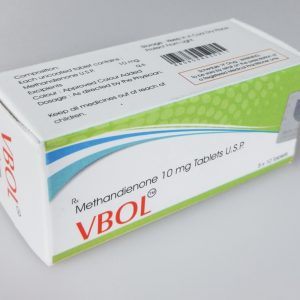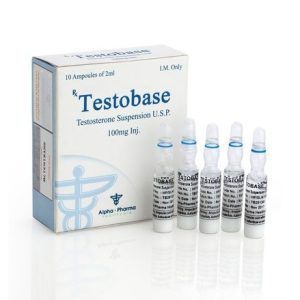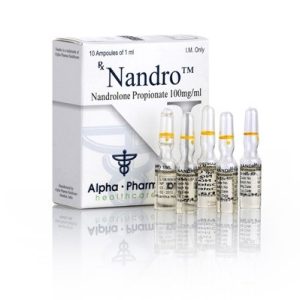$37.00
En rupture de stock
Catégorie :
Clomiphene Citrate is typically prescribed for women to aid in ovulation. In men, the application of Clomid causes an elevation of follicle stimulating hormone and luteinizing hormone. As a result, natural testosterone production is also increased.
This effect is obviously beneficial to the athlete, especially at the conclusion of a steroid cycle when endogenous testosterone levels are subnormal. When an athlete discontinues the use of steroids, his testosterone levels will most likely be suppressed. If endogenous testosterone levels are not brought to normal, a dramatic loss in size and strength may occur. Clomid plays a crucial role in preventing this crash in athletic performance.
Bodybuilders find that a daily intake of 50-100 mg of clomiphene citrate over a two week period will bring endogenous testosterone production back to an acceptable level. Clomid will gradually raise testosterone levels over its period of intake. Since an immediate boost in testosterone is often desirable, athlete will commonly use HCG (human choronic gonadotropin) for a couple of weeks, and the continue treatment with Clomid.
Clomid is also effective as an anti-estrogen. Most athletes will suffer from an elevated estrogen level at the conclusion of a cycle. A high estrogen level combined with a low testosterone level puts an athlete in serious risk of developing gynocomastia. With the intake of Clomid, the athlete gets the dual effect of blocking out some of the effects of estrogen, while also increasing endogenous testosterone production.
by Bill Roberts – Clomid is the anti-estrogen of choice for improving recovery of natural testosterone production after a cycle, improving testosterone production of endurance athletes, and is also effective in reducing risk of gynecomastia during a cycle employing aromatizable steroids.
While it has been claimed that Clomid “stimulates” production of LH and therefore of testosterone, in fact Clomid’s activity is achieved not by stimulation of the hypothalamus and pituitary, but by blocking their inhibition by estrogen.
Clomid is a mixed estrogen agonist/antagonist (activator/blocker) which, when bound to the estrogen receptor, puts it in a somewhat different conformation (shape) than does estradiol. The estrogen receptor requires binding of an estrogen or drug at its binding site and also the binding of any of several cofactors at different sites. Without the binding of the cofactor, the estrogen receptor is inactive. Different tissues use different cofactors. Some of these cofactors are able to bind to the estrogen receptor/Clomid complex, but others are blocked due to the change in shape. The result is that in some tissues Clomid acts as an antagonist — the cofactor used in that tissue cannot bind and so the receptor remains inactive — and in others Clomid acts as an agonist (activator), because the cofactors used in that tissue are able to bind.
Clomid is an effective antagonist in the hypothalamus and in breast tissue. It is an effective agonist in bone tissue, and for improving blood cholesterol.
Clomid also has the property of reducing the adverse effect of exercise-induced damage of muscle tissue. This is very significant for endurance athletes but is not very significant, if at all significant, with reasonable weight training. Clomid does not perceptibly affect gains of the weight trainer either favorably or adversely in my experience.
The drug seems to have estrogenic effects on mood, which can be beneficial (improving relationships with women by improving empathy) or can yield depression or PMS-like symptoms, but for most users there is no significant effect either way.
The claim that duration of intake should not exceed 10-14 days is incorrect. Clinical studies with male patients have been for periods of a year or longer. This error probably originates from the fact that, for use in women, due to the menstrual cycle there would obviously be no point in trying to stimulate ovulation all four weeks of the month. Thus, use in women is limited to 10-14 days. That limitation is not because of toxicity.
Clomid is in fact useful throughout a cycle if aromatizable drugs are being used. I do think however that to be conservative, one should use it no more than 2/3 of the time throughout the year or a little less.
![Drosta E (Drostanolone Enanthate) Vedi-Pharma 10ml [200mg/ml]](https://steroidsftw.org/wp-content/uploads/2019/01/745-1209-Drosta-E-Drostanolone-Enanthate-Vedi-Pharma-10ml-200mgml-300x300.jpg)



StéroïdesFTW est situé dans l'Union européenne avec un taux de réussite de 99% pour les livraisons en Europe et aux Etats-Unis.
COMPTE
CONTACTEZ-NOUS
STEROIDSFTW
Union européenne
paul@steroidsftw.info